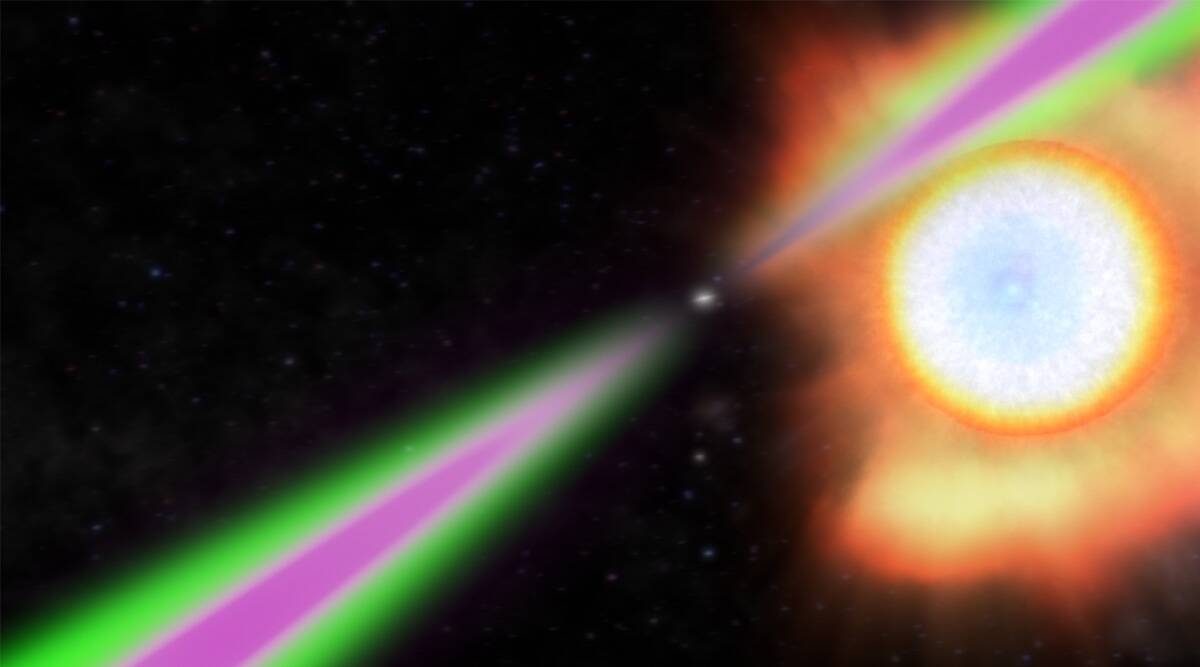Cosmologists have recognized a “dark widow twofold” — a remarkable framework that comprises of a pulsar (quickly turning neutron star) that is surrounding and gradually consuming a more modest buddy star, very much like the female dark widow insect does to its mater, consequently the name. Space explorers have recently distinguished around two dozen dark widow parallels in the smooth manner cosmic system yet the most up to date up-and-comer has the briefest orbital period yet recognized.
The revelation has been accounted for in an exploration article named, “A 62-minute orbital period dark widow twofold in a wide progressive triple,” distributed in Nature Communications.
Named ZTF J1406+1222, the framework has a pulsar and a sidekick star that circle each other at regular intervals. Something else that makes the framework remarkable separated from the short orbital period is the way that it appears to have a third distant that circles the other two each 10,000 years.This perhaps ‘triple dark widow’ has brought up issues about how it might have shaped. The MIT scientists who caused the revelation to have proposed a hypothesis: Just like with most dark widow doubles, the triple framework probably emerged from a thick heavenly body of old stars known as a globular cluster.The specific bunch from which this framework shaped may have floated towards the supermassive dark opening at the focal point of the Milky way. The gravity of this focal dark opening absolute requirement been sufficient to pull the group separated while leaving the triple dark widow unblemished.
“It’s a muddled birth situation. This framework has most likely been drifting around in the Milky Way for longer than the sun has been near. It is truly remarkable to the extent that dark widows go on the grounds that we tracked down it with noticeable light, and in view of its wide buddy, and the reality it came from the cosmic focus,” said Kevin Burdge, a Pappalardo Postdoctoral Fellow in MIT’s Department of Physics, in a press proclamation.
Pulsars are quickly turning neutron stars that are the fallen centers of monstrous stars. They have a staggeringly quick rotational period, twirling around each couple of milliseconds and producing blazes of high energy gamma and X-beams at the same time.
Regularly, pulsars turn down and bite the dust rapidly as they consume tremendous measures of energy in a short measure of time. Yet, from time to time, a passing star can ‘refuel’ them. As a star approaches a pulsar, the last’s gravity pulls material off the star, giving new energy to turn the pulsar back up. This ‘reignited’ pulsar then, at that point, begins reradiating energy that strips the star further until it is totally annihilated.
Each dark widow parallel found to date was distinguished because of the gamma and X-beam streaks from the pulsar. Be that as it may, for this framework, Burdge cam upon it through the optical blazing of the buddy star.
This was conceivable on the grounds that the friend star’s dayside (the side continuously confronting the pulsar) can be commonly more sweltering than the night side because of the radiation it gets from the pulsar. That’s what burdge reasons assuming stargazers noticed a star whose splendor was changing intermittently by an immense sum, it would be areas of strength for a that it was a parallel with a pulsar.



